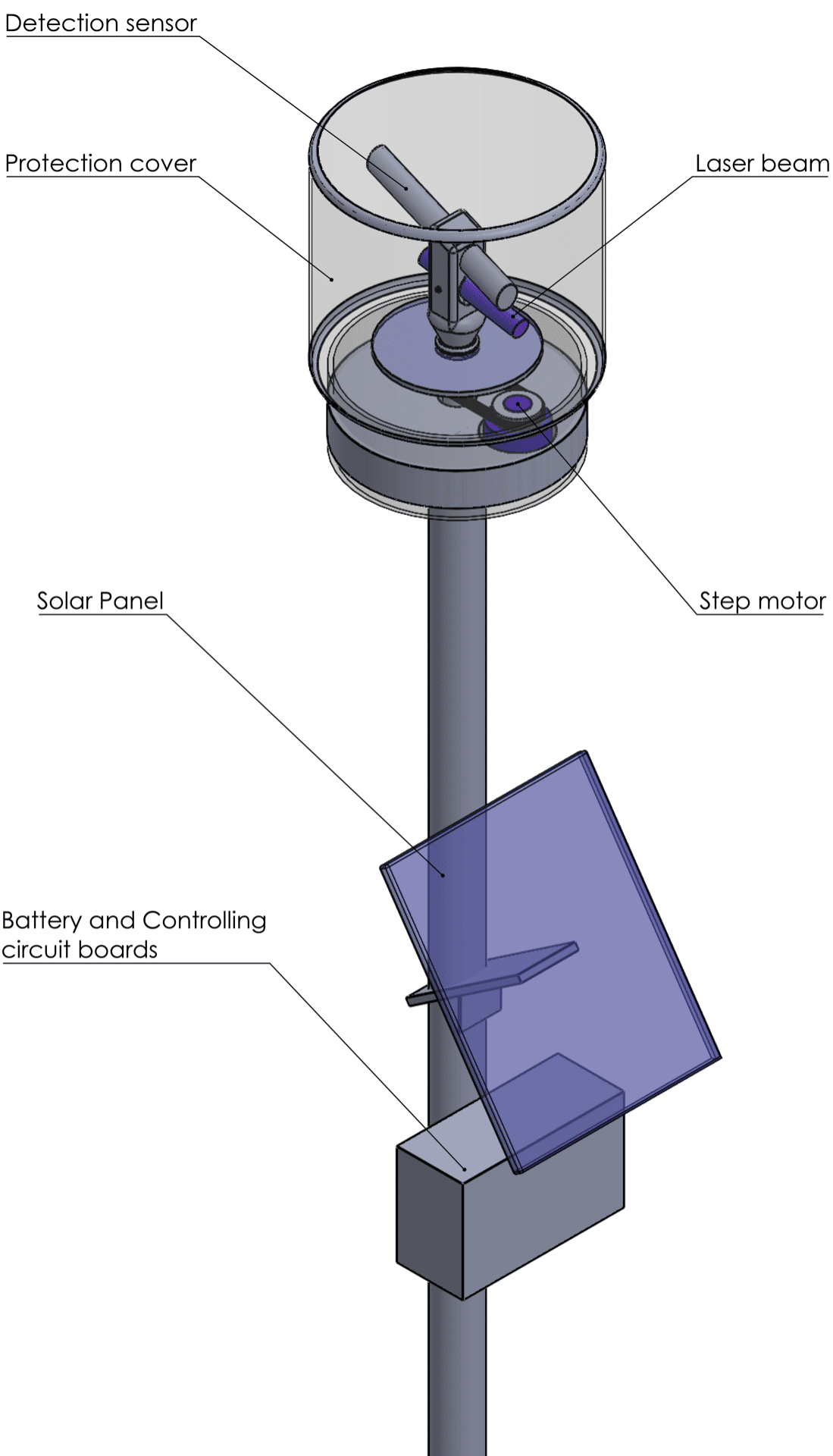Remote-Sensing Aids Designed for Wildlife Management
Wildlife damage during crop production causes yield and quality losses that lead to diminished profits.
Many farmers experience wildlife damage during crop production each year. This damage causes yield and quality losses that lead to diminished profits. Wildlife damage to U.S. agriculture was reported to be at $944 million during 2001 (USDA, NASS-2002). In New York State, particularly, fresh market products are facing severe profit cuts due to wildlife damage. There is another issue concerning wildlife in produce fields and that is the potential for microbial contamination of the crops from animal feces and increased susceptibility to other pests and pathogens (Pritts, 2001; Duffy and Schaffner, 2002; Holb and Scherm, 2008).

Diagram of laser bird repellers designed by Precision Agriculture Specialist Ali Nafchi.
Courtesy of Ali Nafchi / Cornell Cooperative Extension.
Telenko et. al, conducted small plot trials of bird damage in sweet corn (2015-2017) that showed devastating economic losses for farmers. Being able to manage birds in larger fields is the next step. Large-scale plantings can attract many more birds; therefore, the management options need to be updated.
To implement this project, Precision Agriculture Specialist Ali Nafchi has designed two new laser systems that will be tested this year in our region. Type (a) will have a programmed variable pattern laser beam across the field to scare birds. Type (b) has a radar detector that will turn on the laser beam when birds come near the field. Solar panels will power the devices. Once the designs are tested and optimized, growers will be able to build the scare devices themselves.

